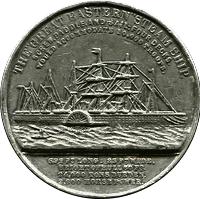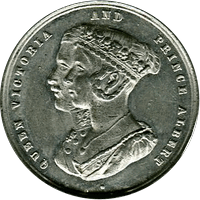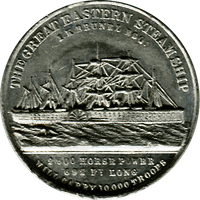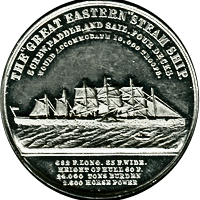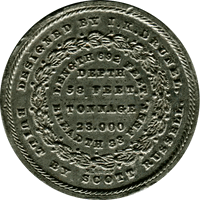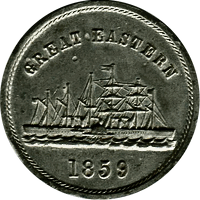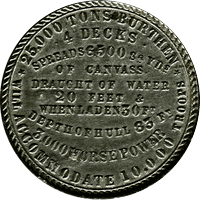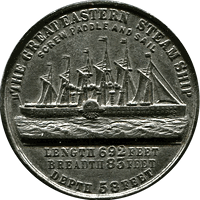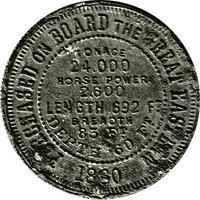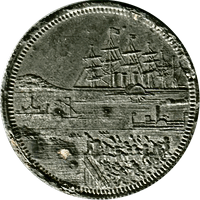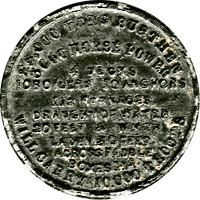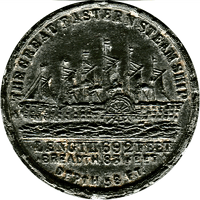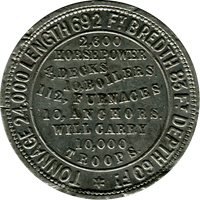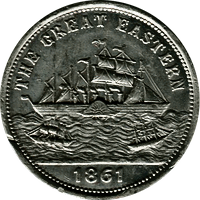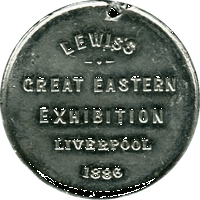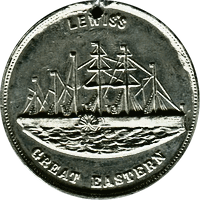Great Eastern
SS Great Eastern was an iron sailing steam ship designed by Isambard Kingdom Brunel, and built by J. Scott Russell & Co. at Millwall Iron Works on the River Thames. She was by far the largest ship ever built at the time of her 1858 launch, and had the capacity to carry 4,000 passengers from England to Australia without refuelling. Her length of 692 feet (211 m) was only surpassed in 1899 by the 705-foot (215 m) 17,274-gross-ton RMS Oceanic, her gross tonnage of 18,915 was only surpassed in 1901 by the 701-foot (214 m) 21,035-gross-ton RMS Celtic, and her 4,000-passenger capacity was only surpassed in 1913 by the 4,935-passenger SS Imperator. The ship's five funnels were rare and were later reduced to four. It also had the largest set of paddle wheels.
Construction started in 1852 but It wasn’t actually launched until 1858 due to its length. Brunel died in 1859 shortly after her first sea trials, during which she was damaged by a boiler pipe explosion. After repairs, she plied for several years as a passenger liner between Britain and North America before being converted to a cable-laying ship and laying the first lasting transatlantic telegraph cable in 1866. Finishing her life as a floating music hall and advertising hoarding for Lewis’s department store in Liverpool, where she was broken up on Merseyside in 1889.
Like many creations at the limit of existing technology she suffered many set-backs.
Cost overruns and multiple bankruptcies during construction. Even its breaker was bankrupted by that final task. Already mentioned explosion - an ever-present danger. Jacob Samuda of the nearby Samuda Brothers yard was killed in an 1844 ship explosion. It was too large to go through the Suez Canal (opened 1869)
However, in 1862 it struck an uncharted rock off Long Island, New York, suffering a gash some 60 times greater than the one that sank the Titanic, but its double skinned hull enabled it to land safely without its passengers even being aware of the incident.
There are many medals commemorating its launch, early voyages and its last days in Liverpool. The earliest medals name it SS Leviathan but it was renamed SS Great Eastern before its maiden voyage.






